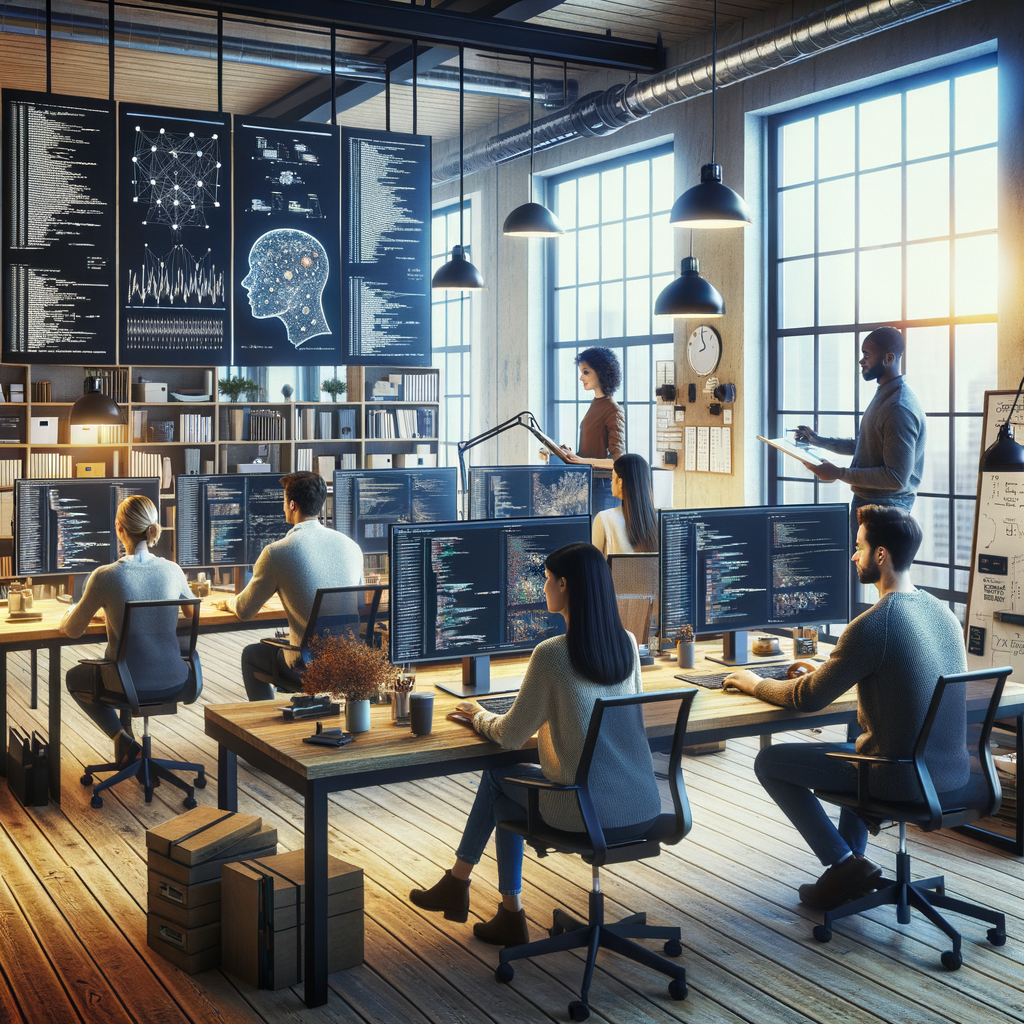Artificial Intelligence (AI) has been a topic of great fascination and debate, capturing the imagination of technologists, futurists, and the public alike. While much attention has been given to the concept of Artificial General Intelligence (AGI), which aims to replicate human-like cognitive abilities, it is Narrow AI that is currently making significant strides across various domains. Narrow AI, or specialized AI, refers to systems designed to perform a specific task or set of tasks with exceptional proficiency. This article delves into the intricacies of Narrow AI, highlighting its capabilities, superiority over general intelligence in certain areas, and its transformative impact on various industries.
Exploring Narrow AI: A Focus on Specialized Tasks
Narrow AI, also known as Weak AI, refers to artificial intelligence systems that are designed to handle specific tasks rather than possessing the broad cognitive abilities of AGI. These systems are engineered to excel within a particular domain, leveraging deep learning, machine learning, and other AI technologies to perform tasks with precision and efficiency. Examples include voice recognition software, recommendation algorithms, and autonomous vehicles—each mastering a specific function within its operational scope.
The focus on specialized tasks allows Narrow AI to capitalize on data pertinent to its domain, making it highly effective at pattern recognition and decision-making processes where vast amounts of specific data are available. For instance, Narrow AI systems in medical imaging can identify anomalies in X-rays with remarkable accuracy, often surpassing human capabilities in speed and precision. This targeted expertise is what differentiates Narrow AI from the broader, more generalized aspirations of AGI.
Another advantage of Narrow AI systems is their ability to operate reliably without the complexity and unpredictability associated with human-like cognition. By concentrating on defined tasks, these systems minimize the risks of unintended behaviors that can arise from more generalized AI approaches. This reliability makes Narrow AI particularly appealing for applications where precision and predictability are paramount, such as in automated financial trading or supply chain management.
Furthermore, the development and implementation of Narrow AI are more straightforward and cost-effective compared to AGI, which remains largely theoretical. By focusing on specific applications, businesses and researchers can quickly demonstrate the return on investment, paving the way for rapid adoption and further innovation across various sectors.
How Narrow AI Outperforms General Intelligence
In tasks requiring high levels of specialization and expertise, Narrow AI often outshines human capabilities and the potential of AGI. For example, in the realm of cybersecurity, Narrow AI can scan and analyze enormous datasets to detect breaches and vulnerabilities with speed and accuracy beyond human reach. This allows organizations to respond proactively to threats, safeguarding valuable information and minimizing potential damage.
In fields like customer service, Narrow AI chatbots and virtual assistants provide 24/7 support, handling a multitude of queries with efficiency and precision. These systems are trained to understand and process natural language, delivering immediate responses and learning from each interaction to improve over time. This level of specialized service exceeds what human agents can offer in terms of speed and scalability.
In the realm of manufacturing, Narrow AI-driven robots can perform repetitive and intricate tasks, ensuring consistency and reducing the margin for error. By optimizing production processes and minimizing waste, these AI systems enhance efficiency and productivity, leading to cost savings and improved product quality. Their ability to adapt to specific production environments gives them a distinct edge over more generalized systems that might struggle with task-specific challenges.
Moreover, Narrow AI’s proficiency is evident in the financial sector, where algorithmic trading systems execute complex transactions at lightning speed, analyzing market trends and making split-second decisions that human traders simply cannot match. By harnessing specialized algorithms, these systems have transformed trading strategies, delivering substantial profits and reshaping market dynamics.
Industries Transformed by Narrow AI Innovations
Narrow AI is revolutionizing industries by introducing innovations that redefine traditional practices. In healthcare, AI-driven diagnostic tools are reshaping patient care, accurately identifying diseases like cancer from imaging scans and suggesting personalized treatment plans. This technological advancement not only accelerates the diagnostic process but also enhances the precision of treatment, leading to better patient outcomes.
The transportation industry is undergoing a significant transformation with the advent of autonomous vehicles powered by Narrow AI. These vehicles are equipped with sophisticated sensors and algorithms that allow them to navigate complex environments, reduce human error, and improve safety on the roads. The shift towards automation promises to revolutionize logistics, reduce traffic congestion, and pave the way for the development of smart cities.
Retail is another industry that has embraced Narrow AI to enhance customer experiences and optimize operations. Personalized recommendation engines analyze consumer behavior to suggest products that align with individual preferences, boosting sales and customer satisfaction. Inventory management systems employing AI improve stock accuracy and demand forecasting, reducing waste and ensuring product availability.
In the entertainment sector, Narrow AI is changing how content is created and consumed. Streaming services use AI algorithms to recommend shows and movies, while content creation tools employ AI to generate realistic visual effects, write scripts, and even compose music. These innovations are not only shaping the media landscape but also expanding the boundaries of creativity and storytelling.
The rise of Narrow AI marks a pivotal shift in how technology is integrated into various aspects of our lives. By excelling in specialized tasks, Narrow AI systems are delivering transformative results across industries, enhancing efficiency, accuracy, and innovation. While the pursuit of Artificial General Intelligence continues, it is Narrow AI that is currently driving the technological revolution, offering practical and impactful solutions that are reshaping our world. As these systems evolve and expand their reach, the potential for further advancements seems boundless, promising a future where AI continues to augment human capabilities in ways previously unimaginable.

